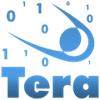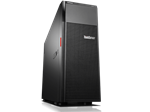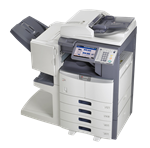Cookies help us deliver our services. By using our services, you agree to our use of cookies.
Close
- sales@tera.lv +371 22111444 +371 22500002
-
Компьютеры, планшеты, телефоны
-
Комплектующие, сетевые продукты
-
Офисная техника, офисные принадлежности
-
Бытовая техника, фото
-
TV, видео, аудио, игровые приставки
-
Канцелярские товары
-
Спорт и Отдых
-
Красота и здоровье
-
Для детей, малышей
-
Автомобильные аксессуары
-
Для дома
-
Для сада и ремонта
Menu
- sales@tera.lv +371 22111444 +371 22500002
- Компьютеры, планшеты, телефоны
-
Комплектующие, сетевые продукты
- Офисная техника, офисные принадлежности
- Бытовая техника, фото
-
TV, видео, аудио, игровые приставки
- Канцелярские товары
-
Спорт и Отдых
- Красота и здоровье
-
Для детей, малышей
-
Автомобильные аксессуары
-
Для дома
- Back
-
Интерьер
-
Бытовая химия и товары
- Back
-
Бытовая химия
- Back
- Мыло
- Моющие средства для белья
- Смягчители для белья
- Mоющие средства для посудомоечной машины
- Средства для мытья посуды
- Химические очистители
- Средство для ухода за туалетом и ванной комнатой
- Универсальные чистящие средства
- Туалеты и канализации прочистки
- Универсальное средство для чистки стекла и зеркал
- View All
- Сушилки
- Гладильные доски и аксессуары
- Корзины для белья
- Держатели для бумаги и мыла
- Скатерти и подставки
- полотенца
- Ящики и корзины
- Мешки и плёнка
- Пластиковые контейнеры для хранения
- View All
-
Сантехника и отопление
-
Зоотовары
-
Для сада и ремонта
- Back
-
инструменты
- Back
- Рабочая одежда и средства индивидуальной защиты
- Измерительные инструменты
-
Лестницы и стремянки
- Back
-
Телескопические лестницы
- Back
-
Бытовая лестницы
- Back
- Лестница
-
Лестница
- Back
- Лестница
-
Ручной инструмент
-
Электрические ручные инструменты
- Ящики для инструментов
- Рабочие столы
- Отделочные инструменты
-
Генераторы
- Back
- Лёгкие генераторы
-
Строительное оборудование
- Back
- Бетоносмесители
- Трамбовки
- View All
-
Аксессуары для сада
-
Cадовое оборудование
- Электромонтажные материалы
(0)
items
Ваша корзина пуста.
все категории
Menu
Корзина
Filters
Personal menu
Preferences
Поиск
- Главная /
- Комплектующие, сетевые продукты /
- Компоненты для компьютера /
- Процессоры /
- Intel Core CPU i9-13900KF 36MB Cache 5,8GHz no GPU
Contact Us
- Ogre, Mālkalnes prospekts 5-18, LV-5003
- sales@tera.lv
- (+371) 22111444, (+371) 22500002
Copyright © 2024 Tera.lv. Все права защищены.





















































